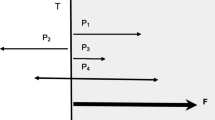Abstract
In this philosophical paper, I discuss and illustrate the necessary three ingredients that together could allow a collective phenomenon to be labelled as “emergent.” First, the phenomenon, as usual, requires a group of natural objects entering in a non-linear relationship and potentially entailing the existence of various semantic descriptions depending on the human scale of observation. Second, this phenomenon has to be observed by a mechanical observer instead of a human one, which has the natural capacity for temporal or spatial integration, or both. Finally, for this natural observer to detect and select the collective phenomenon, it needs to do so on account of the adaptive advantage this phenomenon is responsible for. The necessity for such a teleological characterization and the presence of natural selection drive us to defend, with many authors, the idea that emergent phenomena should belong only to biology. Following a brief philosophical plea, we present a simple and illustrative computer thought experiment in which a society of agents evolves a stigmergic collective behavior as an outcome of its greater adaptive value. The three ingredients are illustrated and discussed within this experimental context. Such an inclusion of the mechanical observer and the natural selection to which this phenomenon is submitted should underlie the necessary de-subjectivation that strengthens any scientific endeavor. I shall finally show why the short paths taken by ant colonies, the collective flying of birds and the maximum consumption of nutrients by a cellular metabolism are strongly emergent.
Similar content being viewed by others
References
Anderson P. W. (1972) More is different. Science 177: 393–396
Barabasi L. -A., Albert R. (1999) Emergence of scaling in random networks. Science 286: 509–512
Bar Yam Y. (2005) A mathematical theory of strong emergence using multiscale variety. Complexity 9(6): 15–24
Bedau M.A. (1997) Weak emergence. In: Tomberlin J. (eds) Philosophical perspectives: Mind, causation and world, Vol 11. MA, Blackwell, Boston, pp 375–399
Bersini, H. (2004). Whatever emerges should be intrinsically useful. In J. B. Pollack, M. Bedau, P. Husbands, T. Ikegami & R. A. Watson (Eds.), Proceedings of Artificial Life 9 (pp. 226–231). Cambridge, MA: MIT Press.
Calvin W. (1987) The brain as a Darwin machine. Nature 330: 33–34
Cariani P. (1997) Emergence of new signal-primitives in neural networks. Intellectica 2: 95–143
Corning P. A. (2002) The re-emergence of “emergence:” A venerable concept in search of a theory. Complexity 7(6): 18–30
Crutchfield J.P. (1994) Is anything ever new? Considering emergence. In: Cowan G., Pines D., Melzner D. (eds) Integrative themes Santa Fe Institute Studies in the Sciences of Complexity XIX. Reading, MA, Addison-Wesley, pp 479–497
Crutchfield J. P., Mitchell M. (1995) The evolution of emergent computation. Proceedings of the National Academy of Sciences 23(92): 103
Dorigo M. V. M., Colorni A. (1996) Ant system: Optimization by a colony of cooperating agents. IEEE Transactions on Systems, Man, and Cybernetics–Part B 26(1): 29–41
Edelman G. (1990) Neural darwinism. Oxford University Press, Oxford
Goodwin B. (1999) How the leopards change its spots: The evolution of complexity. Princeton University Press, Princeton
Groß R., Bonani M., Mondada F., Dorigo M. (2006) Autonomous self-assembly in swarm-bots. IEEE Transactions on Robotics 22(6): 1115–1130
Hendler J., Shadbolt N., Hall W., Berners-Lee T., Weitzner D. (2008) Web science: An interdisciplinary approach to understanding the Web. Communications of the ACM 31(7): 6069
Kauffman S. (1995) At home in the universe: The search for laws of self-organisation. Oxford University Press, USA
Kauffman S. (2008) Reinventing the sacred: A new view of science, reason, and religion. Basic Books, New York
Kubik A. (2003) Toward a formalization of emergence. Artificial Life 9: 41–65
Laughlin R. (2005) A different universe: Reinventing physics from the bottom down. Basic Books, New York
Loomis W. F. (2005) Life as it is—Biology for the public sphere. Cambridge University Press, New York
Maynard Smith J., Szathmary E. (1995) The major transitions in evolution. Freeman press, Oxford
Palsson B. O. (2007) Systems biology—Properties of reconstructed networks. Cambridge University Press, New York
Philemotte, C., & Bersini, H. (2007). A gestalt genetic algorithm: Less details for better search. In H. Lipson (Ed.), Proceedings of the 9th annual conference on genetic and evolutionary computation, New York, NY, USA (pp. 1328–1332). New York: ACM.
Poundstone W. (1985) The recursive universe. Contemporary Books, Chicago
Reynolds C. W. (1987) Flocks, herds, and schools: A distributed behavioral model. Computer Graphics 21(4): 25–34
Sawyer R. K. (2005) Social emergence—Societies as complex systems. Cambridge University Press, Cambridge
Searle J. (1992) The rediscovery of the mind. MIT Press, Cambridge, MA
Author information
Authors and Affiliations
Corresponding author
Rights and permissions
About this article
Cite this article
Bersini, H. Emergent phenomena belong only to biology. Synthese 185, 257–272 (2012). https://doi.org/10.1007/s11229-010-9724-4
Received:
Accepted:
Published:
Issue Date:
DOI: https://doi.org/10.1007/s11229-010-9724-4




